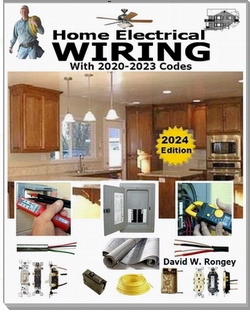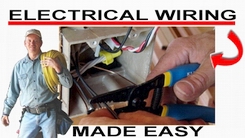» Residential Home Wiring Diagrams
» Need Electrical Help? Ask the Electrician
Electrical Circuit Capacity

|
By Dave Rongey
Summary: A shop is set up in a storage unit and they have tapped their electrical into one of two 20A GFI circuit breakers starting from a sub panel at the building. © By: Dave Rongey |
Electrical Question about the capacity of a Shared Circuit
Question From Michael P-
I have a woodworking shop set up in a storage unit and have tapped my electrical into one of two 20A GFI circuit breakers stemming from a sub panel on my building.
Upon investigation of the electrical set up, I have looked into the sub panels of my building and the two previous(Out of 7 buildings between myself and the main breaker panel) and found that each building has a panel that has a breaker linking it to the next in line.
Two buildings before mine feeds 2-20A circuits, one GFI for the receptacles and one for the 70W HPS lighting circuit, and one 50 A breaker that feeds the building just before me. The building just before me has the same 2 20A circuits as the previous and then has a 40A breaker that feeds the panel on my building.
My building has instead of 2 20 circuits, 4 20A circuits, two of which are GFI protected. And all of this is being fed from a 40A breaker in the previous sub panel? I don't have a complete electrical understanding, but his couldn't be right could it?
We are having trouble with having enough power on our circuits in the building sometimes depending if someone is using electricity further down in the facility. Is there any fix by increasing the size of the breakers down the line?
Hi Michael - Great Question!
No - increasing the size of the circuit breaker is not the answer. Increasing the capacity of the circuit by installing larger wire is, but this must be supported all the way back to the main panel that supplies the power for all.
It sounds like the whole system needs to be reconfigured based upon actual loads that are being connected throughout and then upgrading the supplying circuit. From my experience, storage units supply only enough power for lighting to each unit. If the breaker size is increased without increasing the size of the wire then there will be a high risk of fire due to overheating the existing wire size.
Thank you for your response, that was what I had kind of figured but didn't want to hear due to the inconvenience. They have several 70w HPS High Pressure Sodium ballasts that have been burned out and not replaced for a long time now, so I am sure they WILL NOT spend any money money on an upgrade. So the 40A on the previous panel feeding the 4-20A circuits on mine is not a problem?
Michael P
Michael,
A first hand inspection of the panels and the circuits would need to be done to fully determine if there is a problem with the 40 amp circuit.
Dave
The Safest Way to Test Electrical Devices and Identify Electric Wires!The Non-Contact Electrical TesterThis is a testing tool that I have had in my personal electrical tool pouch for years, and is the first test tool I grab to help identify electrical wiring. It is a Non-contact tester that I use to easily Detect Voltage in Cables, Cords, Circuit Breakers, Lighting Fixtures, Switches, Outlets and Wires. Simply insert the end of the tester into an outlet, lamp socket, or hold the end of the tester against the wire you wish to test. Very handy and easy to use.
The Quickest Way to Check for Faulty Electrical Wiring!The Plug-In Outlet TesterThis is the first tool I grab to troubleshoot a problem with outlet circuit wiring. This popular tester is also used by most inspectors to test for power and check the polarity of circuit wiring. It detects probable improper wiring conditions in standard 110-125 VAC outlets Provides 6 probable wiring conditions that are quick and easy to read for ultimate efficiency Lights indicate if wiring is correct and indicator light chart is included Tests standard 3-wire outlets UL Listed Light indicates if wiring is incorrect Very handy and easy to use.
Strip Off Wire Insulation without Nicking and Damaging the Electric Wire!The Wire Stripper and Wire CutterMy absolute favorite wire stripping tool that I have had in my personal electrical tool pouch for years, and this is the tool I use to safely strip electrical wires. This handy tool has multiple uses: The wire gauges are shown on the side of the tool so you know which slot to use for stripping insulation. The end of the tool can be used to grip and bend wire which is handy for attaching wire onto the screw terminals of switches and outlets.. The wire stripper will work on both solid and stranded wire. This tool is Very Handy and Easy to Use. |
||
Residential Electrical Parts and AccessoriesLight Switches 120volt Outlets Circuit Breakers Electrician Tools Voltage Testers |















